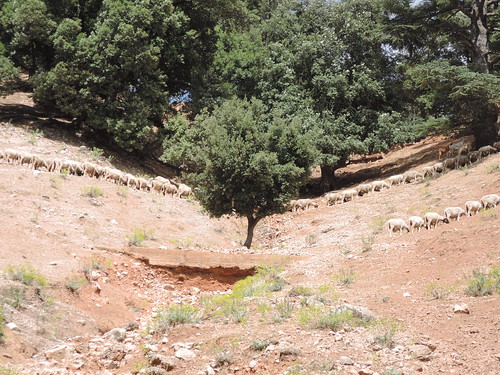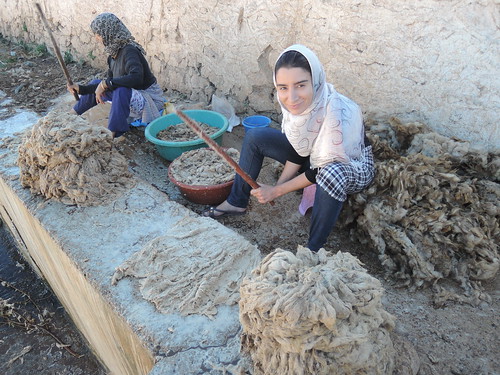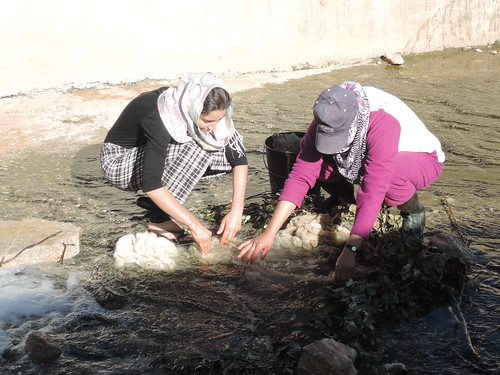Wool. Wool everywhere. I am afraid that for the next few months I will be obsessed with recurring nightmares of flocks waiting to be sheared like in the picture below. At that point, counting the sheep to fall asleep would no longer be feasible to fight insomnia.
I think this week in Ain Leuh I had the most surreal tea-time conversation ever. Planning to offer to visitors an entire overview of the weaving process, the women of Association Tifsa have been debating over how and whom to ask to find sheep to shear in August, explaining to me the difference between an Amazigh sheep and an Arab one (mainly an issue of size) and planning for what time to meet the following day to bring me to wash the wool by the local piscine.
And there you go: today alarm set at 7 o’clock (not as early as I fathomed, fortunately) and I have been provided with an appropriate outfit for the activity ahead. Hachmia and Hurriya, my trainers for today, have been instructing me on how to distinguish a usable piece of wool,which I then proceeded to pound vigorously for soap to penetrate the wool evenly.
Not exactly a relaxing task, but the view of the candid wool that would result after being washed by the spring water was enough fulfilling to make me continue and do a good job.
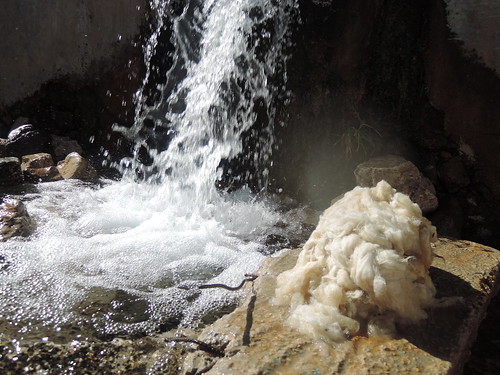
Rinsing the wool was made enough difficult by the temperature of the water and no wonder most of the women suffer of rheumatisms, for I could not resist too long with my feet in full immersion. To my relief, there it came Hurrya’s father to offer us kaskrout to alleviate a little bit the fatigue.
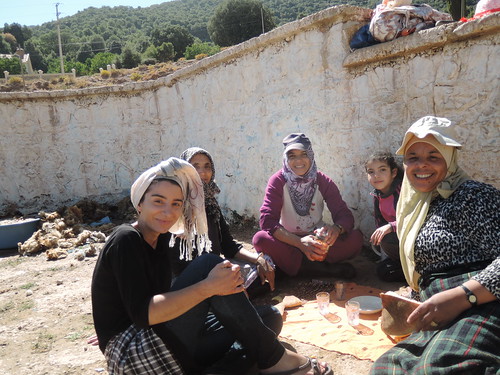
Back to the Association, it was not hard to the other ladies to tell what I had been doing earlier: my smell was apparently too revealing to their nostrils. And I was not smelling exactly like teen spirit.
But it was useful enough to trigger a very informative conversation over the different types of wool and the lack of awareness among tourists and visitors about how prices can vary widely among types: one kilo of fine wool might get up to 180 dirhams per kilo as opposed to just 40 dirhams for the poorest quality.
Which reminded me of a conversation I had earlier this month with a couple of tourists insisting that the prices practised by the weavers were too high. Only to realize later that not only they were not aware that wool had been dyed naturally, but also that their guide had been applying a commission on the price, an heinous practice that reflects even more badly on the weavers and their capacity to sell for a fair price. An awareness that they wish to raise by involving visitors directly into their weaving process, which, I promise, will be a memorable experience!
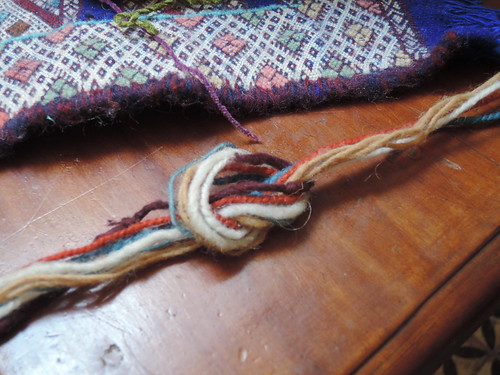
Posted By Silvia Irace
Posted Aug 10th, 2014


